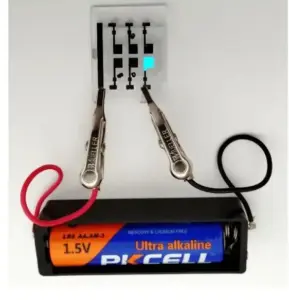Blue light is essential for various applications, including light-emitting devices, general lighting, and screens for smartphones and large displays. Yet, creating efficient blue OLEDs has been a significant challenge due to the high voltage they require to function properly. Traditional blue OLEDs usually need about 4 volts to achieve a luminance level of 100 cd/m2, which exceeds the ideal voltage of 3.7 volts used by lithium-ion batteries in most smartphones. This creates an immediate demand for innovative blue OLEDs that can operate at more battery-friendly voltages.

Researchers from multiple institutions in Japan, led by Associate Professor Seiichiro Izawa from the Tokyo Institute of Technology, have recently developed a new type of OLED that emits blue light but at a much lower voltage—just 1.47 volts. This is quite an achievement, and it makes these OLEDs more suitable for commercial applications such as smartphone screens and large displays.
The researchers achieved this low turn-on voltage by carefully selecting the materials used in the OLED. The device uses NDI-HF as the acceptor, 1,2-ADN as the donor, and TbPe as the fluorescent dopant. The unique feature of this OLED is its operating mechanism, which is termed upconversion (UC). In this system, holes (positively charged spaces) and electrons are injected into the donor and acceptor layers of the OLED, respectively. When these meet, they form what’s called a charge transfer (CT) state at the interface between the donor and acceptor layers. Dr. Izawa emphasizes that the interactions at this donor/acceptor interface are crucial for forming the CT state. Stronger interactions at this interface make the CT state more stable and effective, thereby leading to better performance of the OLED.
The energy from this CT state is then transferred to the low-energy first triplet excited states of the emitter (the material that produces light). Through a process known as triplet-triplet annihilation (TTA), this low-energy state is transformed into a high-energy first singlet excited state that ultimately results in the emission of blue light. What makes this OLED special is that the energy of the CT state is lower than the bandgap energy of the emitter. This is important because it reduces the voltage needed to excite the emitter and produce blue light.
Reference
Izawa, S., Morimoto, M., Fujimoto, K. et al. Blue organic light-emitting diode with a turn-on voltage of 1.47 V. Nat Commun 14, 5494 (2023). https://doi.org/10.1038/s41467-023-41208-7

